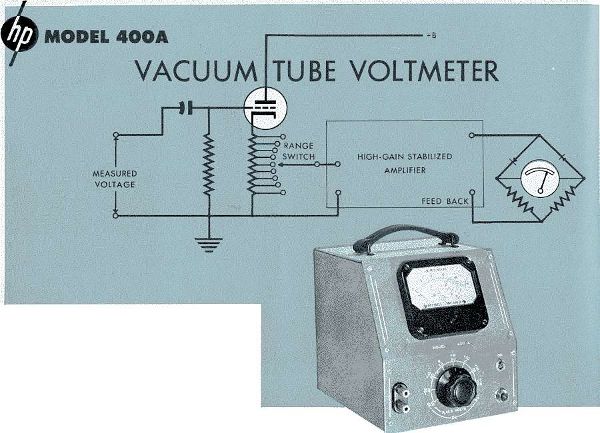It was mentioned that a good voltmeter will disturb the circuit under test as little as possible,and this requires that the meter have a high internal resistance. Besides the electrostatictype voltmeter, there is another way to get an extremely high internal resistance. This is to sample a tiny, tiny current, far too small for any meter to directly indicate, and then amplify this current so that a meter will show it. When a miniscule amount of current is drawn from a circuit, the equivalent resistance is always extremely high.

The most effective way to accomplish the amplification, while making sure that the current drawn really is tiny, is to use either a vacuum tube or a field-effect transistor (FET). You needn’t worry about how such amplifiers work right now; that subject will come much later in this book. A voltmeter that uses a vacuum tube amplifier to minimize current drain is known as a vacuum-tube voltmeter (VTVM). If an FET is used, the meter is called a FET voltmeter (FETVM). Either of these devices provide anextremely high input resistance along with good sensitivity and amplification. And they allow measurement of lower voltages, in general, than electrostatic voltmeters.